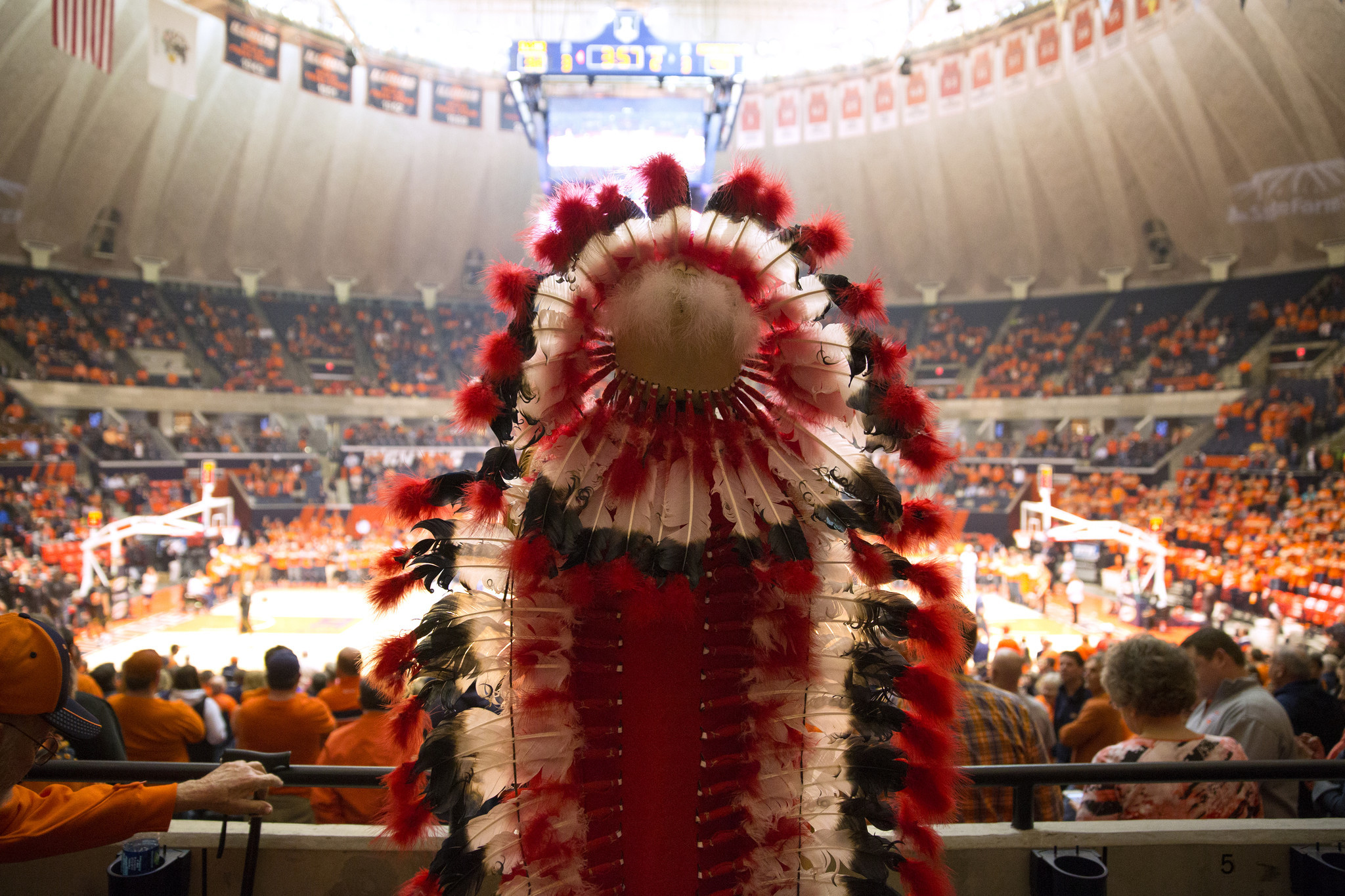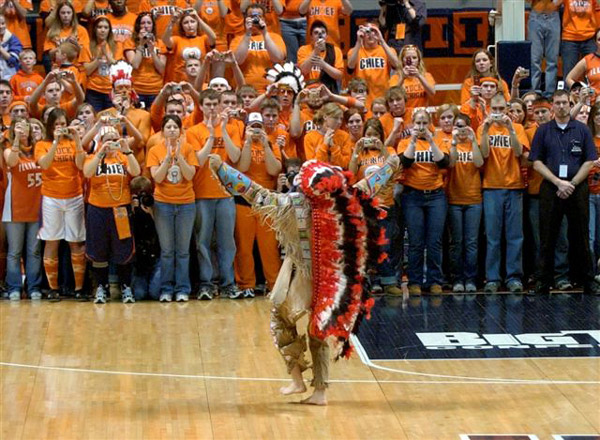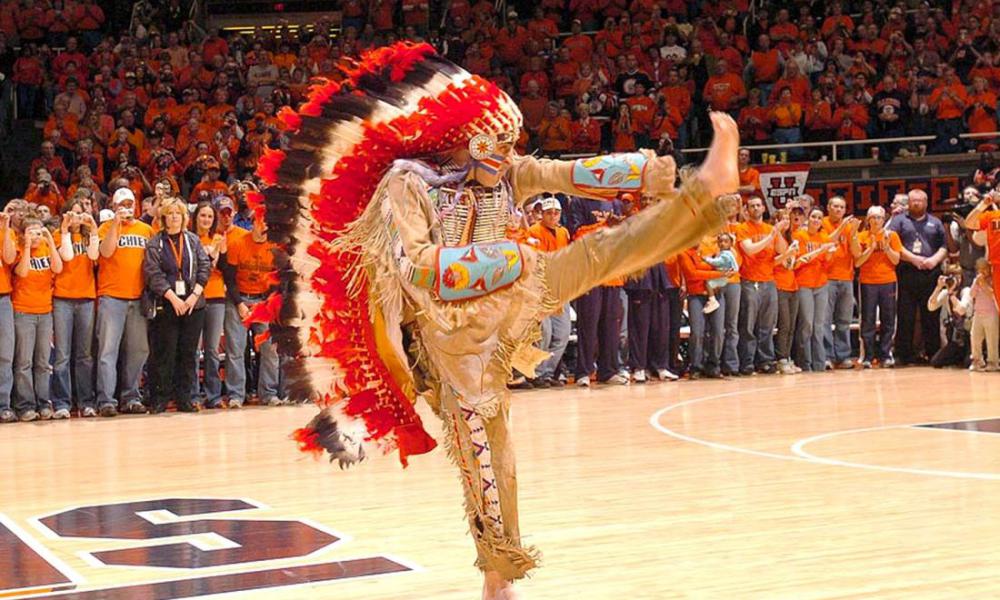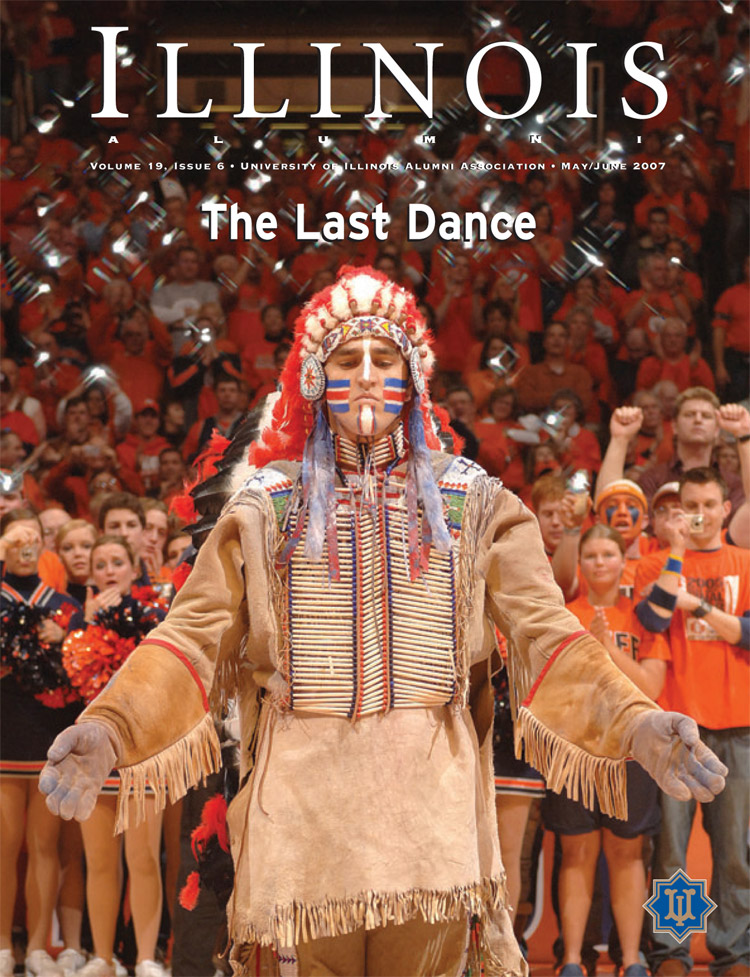Chief Illiniwek Controversy
Final Project
The Chief

In 1926, two Eagle Scouts, Lester Leutwiler and Ralph Hubbard, combined their extensive knowledge of Indian lore and dance that they learned at the World Boyscout Jamboree in Denmark into the creation of "the Chief". The intention of the symbol was to reflect the honor and tradition at the University of Illinois. The Chief was not created to portray a real person, rather, a high-minded concept of unity. The Chief's regalia has a deep symbolism as well, representing the accomplishments of the University as well as unity amongst conflict. The Chief itself was imagined as a fictitious leader for all of the Illini tribes, uniting students of different cultures and backgrounds much in the way that the Native tribes had united to share the land before the University's existence. The Chief maintains this sense of unity by allowing students of any race or gender to represent the role.
Over the years, the Chief has served as a symbol of belonging and pride for hundreds of thousands of men and women, all proud to call themselves "Illini," and prouder still to honor the tradition for which the Chief stands. The Chief serves as a symbol, rather than a mascot, by refraining from silly antics during the game and only performing a set routine that has been approved by the Council of Chiefs.
The Tradition

The Chief embodies the attributes we value as alumni, students, and friends of the University of Illinois at Urbana-Champaign. The tradition of the Chief is a link to our great past, a tangible symbol of an intangible spirit, filled with qualities to which a person of any background can aspire: goodness, strength, bravery, truthfulness, courage, and dignity. It can be said that the Chief is a reflection of what you see in yourself and your community. If you see honor, respect, and tradition, that's what you provide to the world around you. That being said, the reflection also holds true to yourself if you only see hate and divisiveness.
The Dance

The original dance performed by Lester Leutwiler was inspired by authentic dance moves learned from his time in Boy Scouts. A common practice in Native art is to never exactly replicate the creation of another artist, and so each Chief makes their own small edit to the dance. As a result, the current dance is vastly different from the original. The Chief dance is representative of a "fancy dance," which is performed to capture attention and provide entertainment. The dance is an important part of the Chief tradition that is still passed down within the Council of Chiefs.
The Loss

In 2007 the NCAA ruled that schools with Native imagery must get permission from the tribe they were representing or they would be forbidden from hosting post-season tournaments. Schools such as Florida State and Utah were able to partner with local tribes and maintain their imagery. Schools like Hawaii and San Diego State were also able to retain their Native imagery as they did not represent federally recognized indigenous tribes. Illinois was a difficult case because the Chief represented a confederacy of several tribes, rather than just one. Nevertheless, the NCAA decided that the Peoria Tribe of Indians of Oklahoma were responsible for the Chief's fate.
The Peoria ultimately voted against supporting the Chief and the symbol was retired from the University on the grounds that it was "hostile and abusive." Despite the retirement, the University continues to hold its trademark on the logo and make money from its merchandising. In 2013, the Peoria were in talks with the Council of Chiefs, raising the possibility of re-voting, provided the University would partner with the tribe. It was now the University's turn to decide on the fate of the Chief, but UIUC Chancellor Phyllis Wise refused to re-open a dialogue
In 2017, UIUC Chancellor Robert Jones announced that the Marching Illini would be banned from playing the "War Chant." This was viewed as a victory from anti-Chief activists, who have made it their mission to ban from campus any music and imagery that could be associated with the Chief.